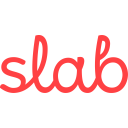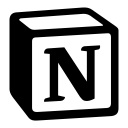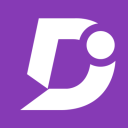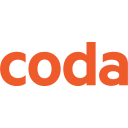Slab vs Confluence: Choosing the right knowledge management tool
- 01Slab vs Confluence: overview
- 02What's the difference between Slab and Confluence?
- 03Slab pros and cons
- 04Confluence pros and cons
- 05Slab compared to Confluence
- 06Confluence compared to Slab
- 07Features comparison
- 08Slab vs Confluence: Which is the best for your business?
- 09Promotions on Collaboration software
- 10Alternatives to Slab & Confluence
Save up to $1,900 on Slab
Save up to $1,900 on Slab
If you manage knowledge-intensive teams, then a reliable knowledge management platform is essential. By centralizing information and documentation, you can streamline collaboration processes and boost productivity. A knowledge management platform ensures your team always has access to up-to-date information, maintaining consistency in processes and decision-making. But with numerous knowledge management solutions available, how do you choose the best tool for your organization?
This article serves as an excellent starting point. In it, we compare two popular knowledge management platforms—Slab vs Confluence. With our detailed analysis of their key features, significant differences, and pricing structures, you'll have the insights needed to make an informed decision for your team's knowledge management needs.
Slab vs Confluence: overview
Slab and Confluence are two prominent contenders in the field of knowledge management and collaboration software, each offering unique advantages tailored to suit distinct organizational needs.
Slab, known for its modern interface and intuitive design, excels in creating a clean, organized knowledge base. It's a preferred choice for teams seeking a straightforward solution that helps them document processes, share information, and collaborate efficiently. In contrast, Confluence is a comprehensive collaboration platform with a wide array of features, including advanced page hierarchies, customizable workflows, and extensive integration capabilities.
To make an informed choice between Slab and Confluence, it's essential to assess your specific organizational requirements, team size, and collaboration objectives.
What's the difference between Slab and Confluence?
Slab and Confluence are both popular knowledge management and collaboration platforms, but they differ significantly in their approach, features, and target audiences. The primary distinction lies in their scope and complexity. Slab is designed as a modern, streamlined knowledge base solution, focusing on simplicity and ease of use. It excels in creating a clean, organized repository of information that's easily searchable and accessible. Confluence, on the other hand, is a more comprehensive wiki-style platform that offers extensive customization options and integrates deeply with other Atlassian products.
Another key difference is their target audience. Slab is particularly appealing to startups and smaller teams that value a clean, uncluttered workspace and prioritize quick information retrieval. Confluence, with its broader feature set, is often favored by larger organizations with complex workflows and diverse collaboration needs.
The user interface and navigation also differ significantly. Slab boasts a modern, intuitive interface with a focus on minimalism and readability. Its organization is topic-based, making it easy to create and find information. Confluence offers a more traditional wiki-style interface with hierarchical page structures, which can be more powerful but potentially more complex to navigate.
Integration capabilities are another area of divergence. While Slab offers integrations with popular tools, Confluence's integration ecosystem is vastly more extensive, especially within the Atlassian suite of products. This makes Confluence a more versatile choice for organizations heavily invested in the Atlassian ecosystem.
Pricing structures also differ. Slab typically offers simpler, more straightforward pricing tiers, while Confluence's pricing can be more complex, especially when considering the costs of additional Atlassian products or add-ons.
Lastly, customization and extensibility set these platforms apart. Slab provides a more out-of-the-box experience with limited customization options, focusing on getting teams up and running quickly. Confluence, however, offers extensive customization possibilities, allowing organizations to tailor the platform to their specific needs through custom workflows, macros, and plugins.
Slab pros and cons
What are the advantages of Slab?
- User-friendly interface: Slab offers a clean, intuitive interface, making it easy for teams to collaborate and organize knowledge without requiring steep learning curves.
- Powerful search functionality: The platform provides robust search features, allowing users to quickly find relevant documents, knowledge articles, or updates across their workspace.
- Seamless integrations: Slab integrates with various productivity tools like Slack, GitHub, Asana, Google Drive, and others, making it adaptable to different workflows and increasing team efficiency.
- Real-time collaboration: It enables multiple users to edit and work on documents simultaneously, providing a smooth real-time collaboration experience for teams.
- Version control and history: Slab maintains a detailed version history of each document, allowing users to track changes, view previous versions, and restore older ones if needed.
What are the disadvantages of Slab?
- Limited customization: Slab’s focus on simplicity means fewer customization options compared to other wiki tools, which may be limiting for teams with more specific design or structure needs.
- Higher cost for larger teams: As the team size grows, the pricing can become expensive for startups or small businesses, especially when compared to free or more affordable alternatives.
- No offline mode: Slab requires an internet connection to function, which can be an issue for teams working in areas with unstable connectivity or those who need to work offline.
- Limited advanced features: It lacks some advanced knowledge management features like automation workflows or complex permissions control, which might be essential for larger enterprises or more complex environments.
- Mobile experience could be better: While functional, Slab's mobile app isn't as smooth or feature-rich as its desktop counterpart, which might hinder users who need to access and edit content on the go.
Compare Slab to other tools
Confluence pros and cons
What are the advantages of Confluence?
- Highly customizable: Confluence offers a wide range of templates, plugins, and customization options, allowing teams to tailor their wiki spaces to suit specific needs.
- Strong integration with Atlassian suite: If you're using other Atlassian tools like Jira, Confluence integrates seamlessly, enabling efficient collaboration between development, product, and other teams.
- Structured content organization: Confluence supports a hierarchical page structure, making it easier to organize information in a logical and accessible way. This is particularly useful for large teams and complex projects.
- Collaborative features: It supports real-time editing, comments, notifications, and @mentions, making it easy for teams to collaborate and communicate on projects within the platform.
- Version control and tracking: Confluence provides detailed version control, allowing users to track changes, view revisions, and restore previous versions of pages if needed.
What are the disadvantages of Confluence?
- Steep learning curve: Due to its vast range of features and customization options, Confluence can be difficult to master, particularly for new users or smaller teams with limited technical expertise.
- Expensive for larger teams: Pricing can quickly escalate as team size increases, especially when considering the cost of both Confluence and other Atlassian tools that are often used in tandem, like Jira.
- Limited search functionality: While it offers a search feature, some users find Confluence's search capabilities lacking, particularly in large, complex wikis where finding specific content can be difficult.
- Performance issues: Confluence can become slow and unresponsive when dealing with large volumes of data or multiple users editing simultaneously, especially in self-hosted instances.
- Cluttered interface: The user interface can feel overwhelming and cluttered, especially for non-technical users, as it presents a lot of options and settings on each page.
Compare Confluence to other tools
Slab compared to Confluence
Slab offers a modern, streamlined approach to knowledge management, focusing on simplicity and ease of use. Its clean interface and intuitive organization make it ideal for smaller teams and startups seeking quick information retrieval.
Confluence, on the other hand, provides a more comprehensive wiki-style platform with extensive customization options and deep integration within the Atlassian ecosystem. While Confluence's feature-rich environment caters to larger organizations with complex workflows, Slab's minimalist design prioritizes readability and accessibility. Slab's straightforward pricing and out-of-the-box functionality contrast with Confluence's more complex pricing structure and extensive customization possibilities.
Is Slab better than Confluence?
When comparing Slab and Confluence, the choice largely depends on the size and needs of the organization. Slab excels in providing a focused, user-friendly experience with minimal setup, making it particularly suited for small teams looking for an easy-to-navigate knowledge base.
Confluence, however, shines with its robust feature set and integrations, catering to larger organizations that need complex documentation and collaboration capabilities. While Confluence offers more customization and flexibility, this can lead to a steeper learning curve, making Slab a more accessible option for those seeking simplicity without sacrificing essential knowledge management functionality.
What is Slab best used for?
Slab is best used as a streamlined knowledge management platform for teams seeking a simple, organized way to document and share information. It excels in creating a centralized knowledge base where teams can collaborate on content creation, easily search for information, and maintain up-to-date documentation.
Slab's strength lies in its clean interface, intuitive organization, and powerful search capabilities, making it ideal for storing and retrieving company policies, procedures, and best practices. It's particularly well-suited for small to medium-sized teams that need a straightforward solution without the complexity of more comprehensive tools. Slab's integrations with popular productivity apps like Slack and Google Drive further enhance its utility as a central hub for team knowledge, facilitating seamless information sharing across platforms.
Can Slab replace Confluence?
Slab has the potential to replace Confluence for certain teams, particularly those seeking a more streamlined and user-friendly knowledge management solution. Slab offers a modern interface, intuitive organization, and powerful search capabilities that can effectively meet the needs of many organizations. It excels in creating and maintaining internal wikis and knowledge bases, which are Confluence's primary functions.
However, for larger enterprises deeply integrated into the Atlassian ecosystem, completely replacing Confluence with Slab may be challenging. Slab lacks some of Confluence's advanced features and extensive customization options. Ultimately, whether Slab can replace Confluence depends on the specific needs, size, and workflow of an organization. For teams prioritizing simplicity and ease of use over complex features, Slab could indeed be a viable Confluence alternative.
Is Slab cheaper than Confluence?
Comparing the pricing of Slab and Confluence isn't straightforward due to their different pricing structures. Slab offers a free plan for up to 10 users, which is similar to Confluence's free tier. For paid plans, Slab's Startup tier at $6.67 per user per month (billed annually) is comparable to Confluence's Standard plan at $4.89 per user per month.
However, Slab's Business tier at $12.50 per user per month is slightly more expensive than Confluence's Premium plan at $8.97 per user per month. It's worth noting that Confluence's pricing can become more complex for larger teams due to its tiered structure, while Slab maintains a simpler per-user pricing model.
Is there a better Collaboration software than Slab?
While Slab offers a streamlined approach to knowledge management and team collaboration, it's important to consider alternative solutions to find the best fit for your organization's specific needs.
Several notable alternatives to Slab in the knowledge management space include Confluence, Notion, Tettra, and Guru.
Selecting the ideal knowledge management software depends on factors such as your team size, industry, customization requirements, and desired feature set. Slab is an excellent choice for its clean interface and focus on simplicity, but exploring these alternatives can offer valuable perspectives and help you make an informed decision that aligns with your knowledge management needs and organizational goals.
40% off the Startup and Business plans for 12 months on Slab
Get 40% off the Startup and Business plans for 12 months on Slab and up to $1,900 savings with Secret.
Confluence compared to Slab
Confluence and Slab are both knowledge management platforms, but they cater to different needs. Confluence, part of the Atlassian ecosystem, offers a robust, feature-rich environment with extensive customization options and integrations, making it suitable for large organizations with complex workflows.
Slab, on the other hand, provides a more streamlined, modern interface focused on simplicity and ease of use, appealing to smaller teams and startups. While Confluence excels in advanced project management capabilities and deep integration with other Atlassian products, Slab shines in its intuitive design and powerful search functionality. Confluence's learning curve is steeper but offers more comprehensive tools, whereas Slab prioritizes quick adoption and clean information organization.
Is Confluence better than Slab?
Confluence is often considered the better choice for larger organizations that require advanced features and deep integrations. Its robust set of tools supports complex project management and collaboration, especially when used alongside other Atlassian products.
While Slab offers a simpler, more intuitive interface that appeals to smaller teams, Confluence provides a more versatile and customizable platform. This makes it ideal for organizations needing detailed documentation, workflows, and extensive control over their knowledge management systems. Although Confluence has a steeper learning curve, its comprehensive functionality makes it well-suited for companies with diverse, evolving needs.
What is Confluence best used for?
Confluence is best utilized as a versatile collaboration and knowledge management platform. It excels in creating and organizing documentation, from project plans and meeting notes to technical specifications and company policies. Confluence's strength lies in its ability to centralize information, fostering team collaboration through features like real-time editing, commenting, and version control. It's particularly effective for creating internal wikis, managing project documentation, and serving as a company-wide intranet.
The platform's integration with other Atlassian tools, especially Jira, makes it invaluable for software development teams, enabling seamless project tracking and documentation. Confluence's customizable templates, powerful search functionality, and flexible space organization make it an ideal solution for teams seeking to improve communication, streamline workflows, and maintain a single source of truth for organizational knowledge.
Can Confluence replace Slab?
Confluence has the potential to replace Slab for many organizations, particularly those seeking a more comprehensive and customizable knowledge management solution. Confluence offers a wider range of features, extensive integration capabilities (especially within the Atlassian ecosystem), and advanced customization options that can cater to complex organizational needs.
However, this comes at the cost of a steeper learning curve and potentially overwhelming complexity for smaller teams. While Confluence can certainly handle all the core functions of Slab, such as document collaboration and knowledge base creation, it may be overkill for teams that prefer Slab's simplicity and streamlined interface.
Is Confluence cheaper than Slab?
When comparing pricing, Confluence tends to be cheaper at the entry-level, with its Standard plan costing less than Slab's Startup tier. However, as organizations grow or require more advanced features, Confluence’s pricing structure can become more complex, especially for larger teams, with higher tiers adding to the cost.
Slab's pricing, while slightly higher at the Business level, offers more simplicity with a straightforward per-user model. For teams prioritizing cost efficiency with basic features, Confluence may appear more affordable, but Slab's predictable pricing structure may appeal to those seeking clarity and fewer pricing tiers as they scale.
Is there a better Collaboration software than Confluence?
While Confluence offers a robust platform for team collaboration and knowledge management, it's important to consider alternative solutions to ensure the best fit for your organization's specific needs.
Several notable alternatives to Confluence in the knowledge management and collaboration space include Notion, Slab, Nuclino, and Microsoft SharePoint.
The selection of the ideal knowledge management software depends on your organization's unique size, industry, and collaboration objectives. If you prioritize deep integration with other Atlassian products and extensive customization options, Confluence may be a strong contender. However, exploring these alternatives can provide valuable insights and help you make an informed decision that aligns perfectly with your team's needs and growth objectives.
Features comparison
Confluence Surpasses Slab in Advanced Collaboration and Feedback Management
While both Slab and Confluence offer a collaborative environment for teams, Confluence steps it up a notch with its robust feedback system. Not only does it allow team members to comment on pages in real-time, but it also includes a solid feedback management system. This lets you gather feedback from your team, clients, or users, and keep track of suggestions, bugs, and improvements — all within Confluence. For example, Confluence's inline commenting feature enables users to highlight specific text and add comments directly, fostering focused discussions. Additionally, Confluence offers customizable feedback forms that can be embedded in pages, allowing teams to collect structured feedback effortlessly.
Slab, while offering basic commenting features, lacks the comprehensive feedback management tools that Confluence provides. This makes Confluence particularly valuable for teams working on complex projects requiring extensive collaboration and iterative improvements based on diverse stakeholder input.
Both Slab and Confluence Excel in Centralized Knowledge Management
Both Slab and Confluence provide a robust platform for creating and managing a centralized knowledge base. Whether it's documents, procedures, tutorials, or best practices, both SaaS tools ensure that these resources can be easily accessed and updated by the team. For instance, both platforms offer customizable templates for creating standardized documentation, such as project plans, meeting notes, or onboarding guides. They also provide version control features, allowing teams to track changes and revert to previous versions if needed. Slab's topic-based organization and Confluence's hierarchical structure both facilitate easy navigation through large amounts of information.
Additionally, both tools support rich media content, enabling users to embed images, videos, and other interactive elements to enhance their documentation. The ability to set different permission levels for various users or groups is another shared feature, ensuring that sensitive information remains secure.
Slab Outshines Confluence in User-Friendliness and Intuitive Design
When it comes to straightforward operation and user-friendly experience, Slab has a clear edge over Confluence. Slab's interface is designed with simplicity and efficiency in mind, ensuring all features are easy to understand and use. For instance, Slab's clean, minimalistic layout allows users to quickly navigate through documents and access information without unnecessary distractions. Its powerful search function enables users to find relevant content rapidly, enhancing productivity.
On the other hand, Confluence can initially appear complex and intimidating due to its extensive range of features. Its dashboard offers a plethora of tools, such as project tracking and integrations with Jira, which may not be immediately intuitive for someone unfamiliar with the platform. While Confluence does offer a comprehensiveness that some may find beneficial, the initial learning curve can deter users looking for a more intuitive experience.
Confluence Outshines Slab in Integration Capabilities and Ecosystem Support
Assessing the integration capabilities of Slab and Confluence reveals another key difference between these two tools. Slab does offer a good number of integrations with popular tools, but Confluence's integration potentials are more comprehensive and deeply rooted in the Atlassian ecosystem. For instance, Slab integrates well with tools like Slack, Google Drive, and GitHub, providing seamless communication and file sharing.
However, Confluence takes integration to another level, especially with its native connection to Jira, Atlassian's project management tool. This integration allows teams to link Confluence pages directly to Jira issues, embed Jira roadmaps in Confluence pages, and even create Jira tickets from within Confluence.
Slab Outperforms Confluence in Cross-Platform Search Capabilities
Slab's powerful search function empowers your team to find what they need, exactly when they need it, across all your integrated tools. Find Slack conversations, important Google Docs, and more — all within Slab. While Confluence also provides an advanced search function, it does not extend its capabilities to integrated tools like Slab does. For instance, with Slab, users can search for specific keywords in Slack messages, Google Drive documents, and GitHub repositories directly from the Slab interface. This cross-platform search capability significantly reduces time spent switching between applications and enhances productivity. Slab's search function also employs machine learning algorithms to improve search results over time, learning from user behavior to prioritize relevant content.
In contrast, while Confluence's search is robust within its own ecosystem, it lacks the seamless integration with external tools that Slab provides, making Slab the superior choice for teams working across multiple platforms.
Confluence Outpaces Slab in Comprehensive Project Management Capabilities
Confluence stands out with its comprehensive project management tools. It aids in breaking down your project into manageable tasks, assigning them to team members, tracking progress, setting deadlines, and keeping everyone accountable. While Slab offers a rich platform for idea sharing and discussion, it does not possess built-in project management features like Confluence. For example, Confluence's Project Management blueprint allows teams to create project spaces with pre-defined templates for project charters, meeting notes, and status reports. Its integration with Jira enables seamless task tracking, where users can create and update issues directly from Confluence pages. Confluence also offers Gantt chart macros for visual project timelines and roadmap planning.
Additionally, its customizable dashboards provide real-time project overviews, displaying key metrics and progress indicators. Slab, while excellent for documentation and knowledge sharing, lacks these dedicated project management tools.
Slab Surpasses Confluence in Granular Permission Controls and Customization Options
In terms of permission levels and customization, Slab has the upper hand. It allows you to customize permission levels, controlling who has access to certain information. In addition, Slab also offers easy-to-use templates for various types of documentation, from project plans to meeting agendas. Confluence offers customizable branding but lacks in-depth customizable permission levels.
For instance, Slab's permission system allows administrators to set access rights at the topic, post, or even paragraph level, ensuring sensitive information remains secure. This granular control extends to external collaborators, enabling teams to share specific content with clients or partners without exposing the entire knowledge base. Slab's template library includes pre-designed formats for product requirements, design briefs, and onboarding guides, which can be further customized to match company branding.
Subscribe to our newsletters.
No FOMO here. Stay up-to-date on all the latest deals and news with our monthly newsletter straight to your inbox like 122,000+ entrepreneurs (+ Get 10% off on on our Premium Membership!)
Slab vs Confluence: Which is the best for your business?
Slab is the best tool for you if:
- You prioritize a clean, intuitive interface that allows team members to quickly find and share information without a steep learning curve.
- Your organization needs a knowledge management solution that seamlessly integrates with popular tools like Slack, Google Drive, and GitHub.
- You require granular permission controls, allowing you to manage access to sensitive information at the topic, post, or even paragraph level.
- Your team values a powerful cross-platform search function that can locate content across all integrated tools, including Slack conversations and Google Docs.
- You prefer a streamlined, modern approach to documentation and knowledge sharing, with easy-to-use templates and a focus on simplicity and efficiency.
Confluence is the best tool for you if:
- Your organization is already invested in or considering other Atlassian products, as Confluence integrates seamlessly with tools like Jira and Bitbucket.
- You need comprehensive project management features alongside knowledge management, including task assignment, progress tracking, and Gantt chart capabilities.
- Your team requires extensive customization options and a wide range of plugins and add-ons to extend functionality beyond basic documentation.
- You value a robust feedback management system that allows for inline commenting, structured feedback forms, and easy conversion of feedback into actionable tasks.
- Your organization needs a versatile platform that can serve as both an internal wiki and a collaborative workspace for complex, large-scale projects.
Alternatives to Slab & Confluence
Promotions on Collaboration software
Start saving on the best SaaS with Secret.
Secret has already helped tens of thousands of startups save millions on the best SaaS like Slab, Confluence & many more. Join Secret now to buy software the smart way.










